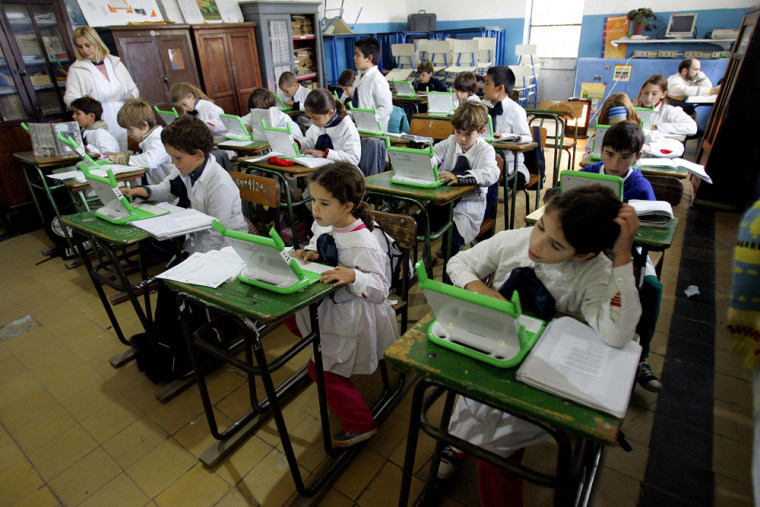A non-profit group developing a low-cost laptop for poor children said that a production delay would cause a shortage of computers available in the United States and Canada as part of a holiday giving program.
The $188 string-pulley-charged XO laptop was scheduled to go into production at a Chinese factory in October, but it is now slated to begin by November 12, said Mary Lou Jepsen, chief technology officer for the One Laptop per Child Foundation.
"We had some last-minute bugs. We've resolved them," she said in a recent interview, adding that the group expected to produce 100,000 laptops this year.
An October launch would have given the group time to produce and ship tens of thousands of laptops to Peru and Uruguay, the first two countries to order the laptops.
It would now be tough to get those laptops to South America by December, in time for kids to use them over their summer vacation, and also meet orders for the foundation's Give 1 Get 1 scheme for people in the United States and Canada, she said.
For $400, Give 1 Get 1 provides buyers with a laptop of their own plus a second machine to a poor child overseas.
The laptop features a string-pulley to charge its battery, a keyboard that switches between languages, a digital video camera, wireless connectivity and Linux open-source operating software tailored for remote regions.
The display switches from color to black-and-white for viewing in direct sunlight — a feature unavailable in laptops at least 10 times more expensive.
It needs just 2 watts of power compared with a typical laptop's 30 to 40 watts, and does away with hard drives, relying instead on flash memory and 4 USB ports to add memory devices. The group is experimenting with a device that uses cows to generate power to charge its battery.
The fourth quarter is the busiest time of the year at computer plants in China, which produce the bulk of PCs from companies such as Hewlett-Packard Co., Dell Inc. and Apple Inc.
Jepsen said some laptop customers in the United States and Canada would be able to get their PCs before the holidays, but they would be shipped on a first-come, first-served basis.
"Order early," she said.
The foundation will accept orders on its Web site from November 12.
